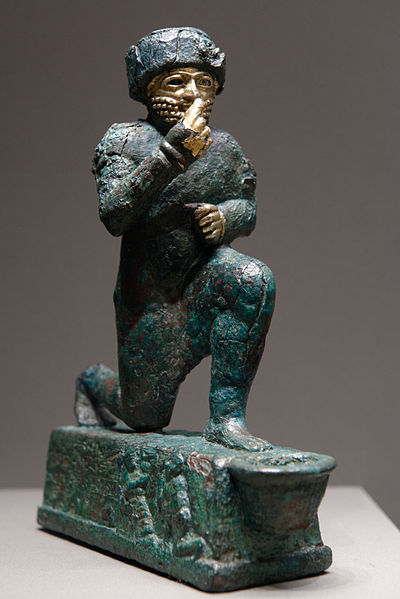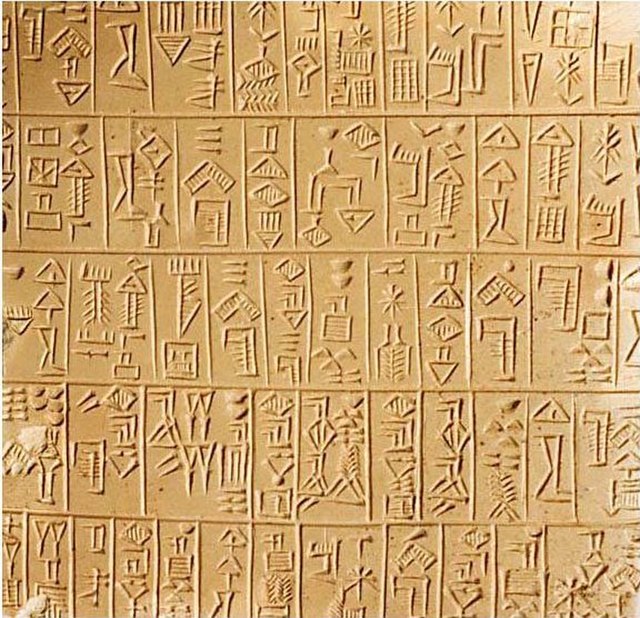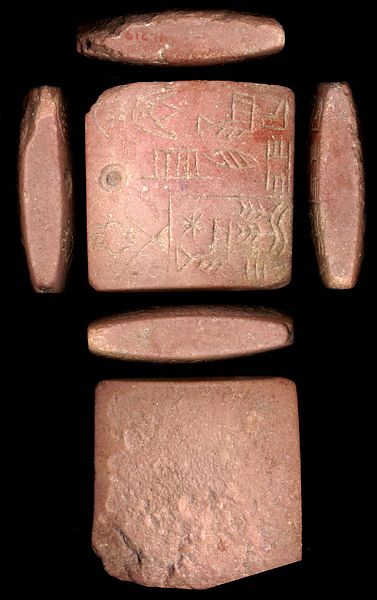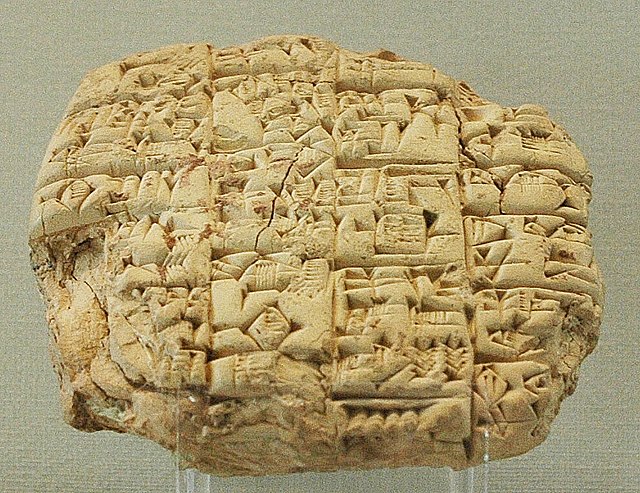Larsa, also referred to as Larancha/Laranchon by Berossos and connected with the biblical Ellasar, was an important city-state of ancient Sumer, the center of the cult of the sun god Utu with his temple E-babbar. It lies some 25 km (16 mi) southeast of Uruk in Iraq's Dhi Qar Governorate, near the east bank of the Shatt-en-Nil canal at the site of the modern settlement Tell as-Senkereh or Sankarah.
The Worshipper of Larsa, a votive statuette dedicated to the god Amurru for Hammurabi's life, early 2nd millennium BC, Louvre
Detail of a terracotta cylinder of Nabonidus, recording the restoration work on the temple of Shamash at Larsa. Dated to 555–539 BCE. Probably from Larsa, Iraq. Housed in the British Museum
List of the kings of Larsa, 39th year of Hammurabi's reign, Louvre
Compilation of plane geometry problems from Larsa, Old Babylonian period.
Sumerian is the language of ancient Sumer. It is one of the oldest attested languages, dating back to at least 2900 BC. It is accepted to be a local language isolate and to have been spoken in ancient Mesopotamia, in the area that is modern-day Iraq.
Sumerian language
This proto-literate tablet (c. 3100 – 2900 BC) records the transfer of a piece of land (Walters Art Museum, Baltimore)
The first known Sumerian-Akkadian bilingual tablet dates from the reign of Rimush. Louvre Museum AO 5477. The top half is in Sumerian, the bottom half is its translation in Akkadian.
Letter sent by the high-priest Lu'enna to the king of Lagash (maybe Urukagina), informing him of his son's death in combat, c. 2400 BC, found in Telloh (ancient Girsu)








